Posted on December 17, 2018 in Life Style.
Chronicle of Kristel Mourgue d'Algue: The Incredible Golf Course of Japan
The figures are confusing, 10 million golfers and 2,290 courses. Japan ranks 2nd and 3rd in the world behind the United States and the United Kingdom in an archipelago the size of California and having half the American population. This fervor for the little white ball is not recent, it dates from the beginning of the 20th century. It went through some "damage" and now seems to be enjoying a second wind, on the eve of the Tokyo Olympic Games in 2020.
About Kristel Mourgue d'Algue
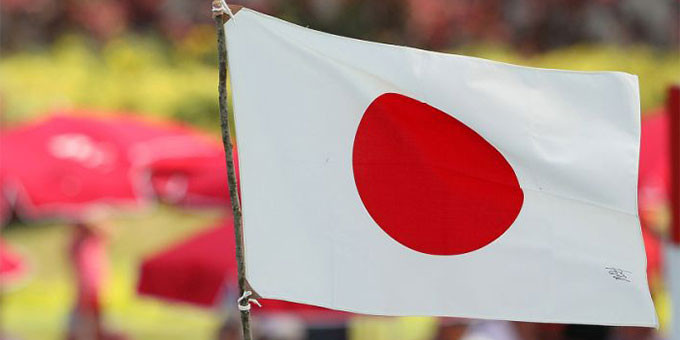
Photo: DR
It all started in 1900, when an English tea farmer by the name of Arthur Groom imagined four holes which four years later became the 18 holes of Kobe golf course, the first in the country. Then in 1913, Tokyo businessmen built six holes which over time and real estate pressures, in a country where the great outdoors are precious, turned into a fully fledged course relocated to Sayama, 60 km from Edo.
Nevertheless, the arrival in 1930 of the English architect Charles Hugh Alison, partner of the famous Harry Shapland Colt, drastically changed the design of the courses. In the space of three months, he defined the bases of the architecture and in particular the bunkers which wanted to be vast and deep in the future; the "Alisons"! A talented builder, he revealed a unique ability to combine his designs with a masterful nature, as evidenced by the Hirono golf courses 40km west of Osaka and the “Fuji” course of the Kawana golf course, located 80km from the capital. A decade later, at the end of the Pacific War (1941-1945), a period of reconstruction began which lasted nearly 20 years. Fortunately, Alison's “disciples” such as Komyo Otani, Osamu Ueda or Seiichi Inoue, worked to restore the original spirit of the lines.
The magnificent Hirono course and the famous “Alisons” bunkers
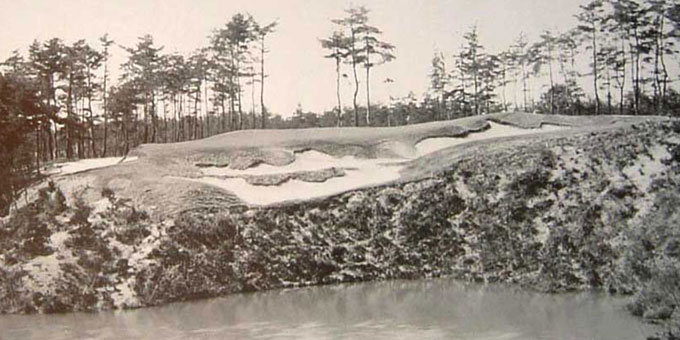
The magnificent Hirono course and the famous “Alisons” bunkers - Photo: DR
The decisive turning point in the history of the sport in Japan came in 1957 with the victory of Torakichi Nakamura and Koichi Ono in the Canada Cup (which became the World Cup in 1967). They were nine points ahead of American stars Sam Snead and Jimmy Demaret. Invincible, Nakamura also won first place in individual which allowed him to appear in the Masters and sign the first Japanese participation. From that moment, a real golfing frenzy seized the Japanese people. In the space of 30 years, the number of departures has increased tenfold to reach 102 million per year in 1987 (Golfweek, May 8, 2004). The membership fees of clubs, mostly private, reached astronomical sums with an annual average of $ 400,000. The practice of this activity symbolized social success but also corporate sport par excellence. The contracts were negotiated on the greens, it was the “seitai golfu”!
Benefiting from a temperate climate, it manifested itself all year round (except in mountainous regions) on uneven tracks like the topography. Admittedly unsightly and expensive, two greens with two distinct grasses per hole made it possible to face the different seasons until the discovery of the more resistant A4 bent grass variety. Singular, the golfing ritual meant a whole day on fairways located mainly far from town centers, a stop at the new one to eat followed by a common bath in thermal waters, the art of "onsen", in order to relax afterwards. all this fuss!
The art of "onsen"; Japanese common bath
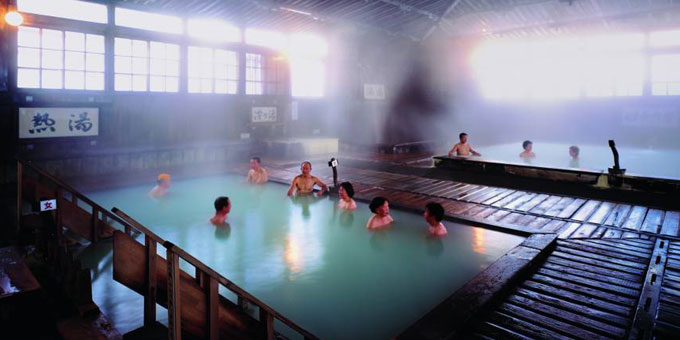
The art of "onsen"; the Japanese communal bath - Photo: DR
The economic crisis of the end of the Eighties marked a pause in this "acute" gulf, henceforth a symbol of "decadence" coming from the West. Two decades later, in 80, 2004% of clubs were still experiencing financial difficulties (Golfweek, May 71, 8)…
Currently, private golf courses offer much more measured annual fees and many courses have been opened to the public. After some procrastination and like the West, the Japanese Golf Association has also better targeted its development towards programs intended for women and young people. Spearheading growth, Asia's middle class now spends twice as much as its Western counterpart (Forbes October 4, 2017). Japan represents, among other things, the second market for the sale of golf products.
Visionary, the American men's circuit has long established links with the archipelago through television broadcasts of the tournaments. After Beijing in 2013, the PGA * 1 Tour opened an office in Tokyo in 2016. Sponsors such as iconic brands Sony or Bridgestone have been undeniable financial backers for almost two decades and the announcement of the Zozo Championship for October 2019 on the Narashino golf course near Chiba shows renewed interest. With a field of 78 players, this will be the first tournament of the PGA Tour in Japan, a real consecration. Zozotown, the largest Japanese fashion website, promises an endowment of nearly $ 10 million per year until 2025.
Ty Votaw (Executive Vice President of PGA TOUR and Yusaku Maezawa (CEO of ZOZO Inc.)
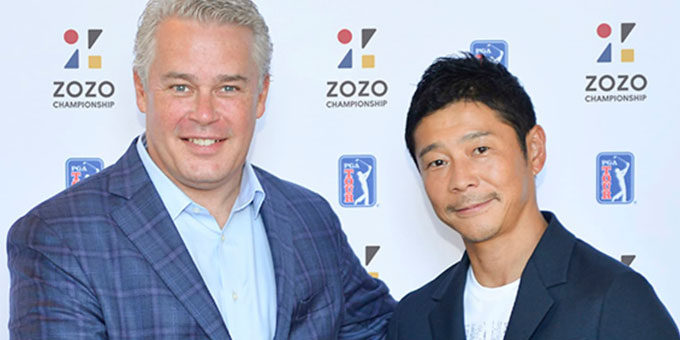
Ty Votaw (Executive Vice President of PGA TOUR and Yusaku Maezawa (CEO of ZOZO Inc.) - Photo: DR
Locomotives, champions and professional champions have always played an essential role in the development of this game. The icon Isao Aoki, now 76 years old, was the first to win a PGA Tour event in 1983 , the Hawaiian Open. He knew his fame when he stopped at the gates of victory over legendary American Jack Nicklaus during the 1980 US Open in Baltusrol, New Jersey. A life dedicated to this game and now President of the Japanese circuit, he is the opposite of Masashi alias “Jumbo” (for the strength of his driving) Ozaki, 71 years old and a colorful character. The eldest of an astonishing sibling of three boys, they all managed to cross the cut at the 1989 British Open in Troon, Scotland (Bruce Critchley, Skysports). Charismatic and flamboyant, Jumbo was nicknamed "the Japanese Arnold Palmer" with 94 victories on the national circuit and two outside the archipelago. His alligator shoes, his tailored pants, his passion for cigars and his taste for good things helped to shape the legend. High hopes were placed on Ryo Ishikawa, 27, when he was the youngest winner of the Japanese Tour at the age of 15 years and 8 months. The "bashful prince" ("young first") who turned pro the following year, caused a new wave of enthusiasm among the public and the media, to such an extent that the Japanese circuit avoided, thanks to his performances, bankruptcy. ten years ago! However, forced to return to the national circuit, his golf peak is still long overdue ... Hideki Matsuyama, 26, unquestionably embodies the most serious possibility of success in Major. 25th in the world this season, he came close to being crowned in 2017.
Particularity of the powerful swing of Hideki Matsuyama; his break at the top of the backswing
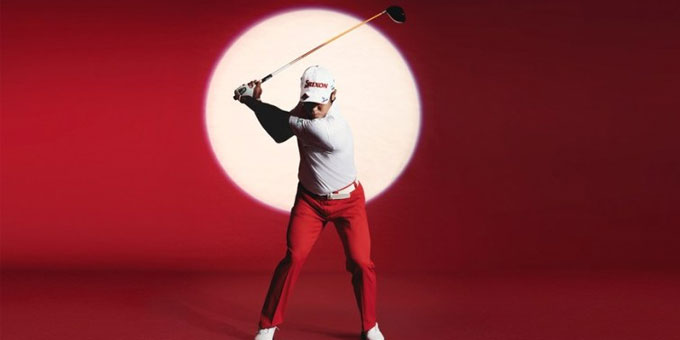
Particularity of the powerful swing of Hideki Matsuyama; his break at the top of the backswing - Photo: DR
On the women's side, Hisako “Chako” Higuchi, 73, won the LPGA * 1977 Championship in 2 and became the first Japanese inducted into the World Golf Hall of Fame, the World Golf Hall of Fame. Ayoko Okamoto, 6 years younger, triumphed 17 times on the American circuit before the living legend, Ai Myazato, finished at the top of the world level in 2010! Idolized at a very young age, she ended her career in 2017 at the age of 32. The star of tomorrow, Nasa Hataoka, takes its premonitory first name from… the American space agency! From her 19 springs, she has already collected two LPGA victories this year and occupies the 7th place in the world.
As for the scheduled arrival of the Olympics in Tokyo in two years on the same route, "East" by Kasumigaseki, as the Canada Cup in 1957, would it be a sign of fate? The symbolic choice of this traditional Club, now open to women and to the evolution of the modern game with the renovation undertaken in 2016 by the famous American architect Tom Fazio and his son Logan, reflects a promising opening to the world. All the factors would then come together for a second golf shock wave. Let's bet that the Olympics are a success!
KMA is a former European Circuit player, co-editor of the Rolex Guide to the “1000 Best Golf Courses in the World” and co-owner of the Grand Saint Emilionnais Golf Club
* 1 Professional Golfers' Association / American Professional Circuit
* 2 Ladies Professional Golf Association
Philippe Heuzé: An unforgettable day with Gary Player
Lacoste X Théo Curin: a new collection
The first Golf Art Fair at the Prieuré golf course








